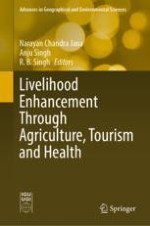2022 | OriginalPaper | Chapter
14. Classifying the Million-Plus Urban Agglomerations of India—Geographical Types and Quality of Life
Authors : Habil Zoltán Wilhelm, Róbert Kuszinger, Nándor Zagyi
Published in: Livelihood Enhancement Through Agriculture, Tourism and Health
Publisher: Springer Nature Singapore
Activate our intelligent search to find suitable subject content or patents.
Select sections of text to find matching patents with Artificial Intelligence. powered by
Select sections of text to find additional relevant content using AI-assisted search. powered by
